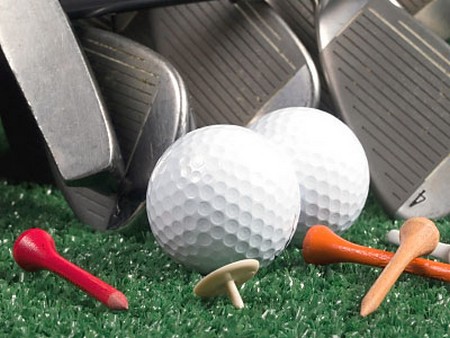Many club professionals and specialist golf shops now have test equipment available. Try them. Playing with a club is the best way of knowing if you really like it.
Where possible, obtain a full set of clubs to take to the practice range and to play a round. Keep in mind, however, that not even this is foolproof, because test clubs are usually set to standard specifications and a number of these may not suit you. In all likelihood you will need either different lies on your clubs, different shafts, and different grips but the test set is an excellent starting point.

From there the professional can advise you on what specifications you need. Ideally, he should accompany you on the practice range as you try the test clubs. You can then decide what course of action to take:
• If you are a golfer with an ingrained swing fault and you have neither the time nor inclination to change you will want clubs which minimise the effects of that fault.
• If you are a golfer who is willing to work hard to rectify the fault you will want clubs that in the long term will suit your new swing.
Lie Board
An important piece of equipment used by the professional is the lie board, a device that tells you whether your clubs are set with the right lie, the angle at which the shaft enters the clubhead.
For example, at the address position, you may hold your hands quite low and it may seem that your clubs should be set, say 2° flat, but at impact you may be in a more upright position.
The lie board has a section on which you stand while under the clubhead is a sheet of heavy-duty plastic. Tape is placed on the bottom on the clubhead and you hit a ball from the plastic. Use a club with the standard lie. If the tape marks in the middle of the blade, then standard is right for you; towards the heel means you need a flat lie; towards the toe means you need an upright lie.
When you have been fitted with your new clubs, you should go back to the practice range and try the lie board again to double-check if the set up is right or needs fine tuning.
Having the right lie on your club is imperative. If it is too upright, the heel of the club hits the ground first, opens the clubface through impact and increases the chance of pushing or slicing the ball. If the lie is too flat, the toe hits the ground first, pivots around the heel and increases the chance of hitting a pulled or hooked shot.
Look at the Options
When using test sets, don’t just think in terms of the generic combinations like three woods, nine or ten irons and putter. Look at the great variety of utility clubs on the market and try out as many as you think necessary.
Above all, be patient. If you have to wait to try out test clubs because someone else is using them, then do so. Give yourself every opportunity to obtain the right clubs and the right combinations.